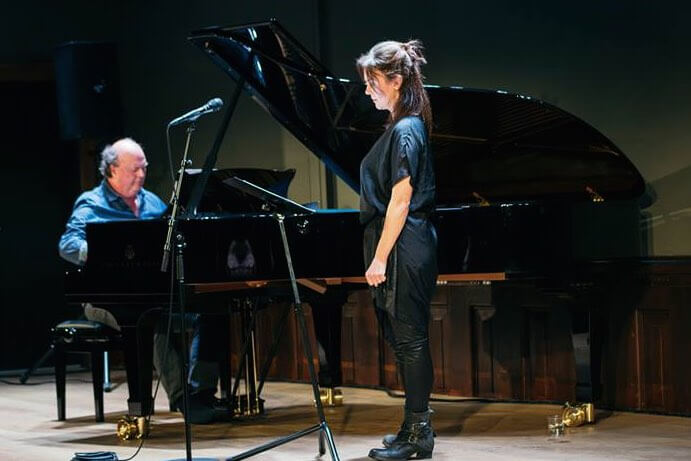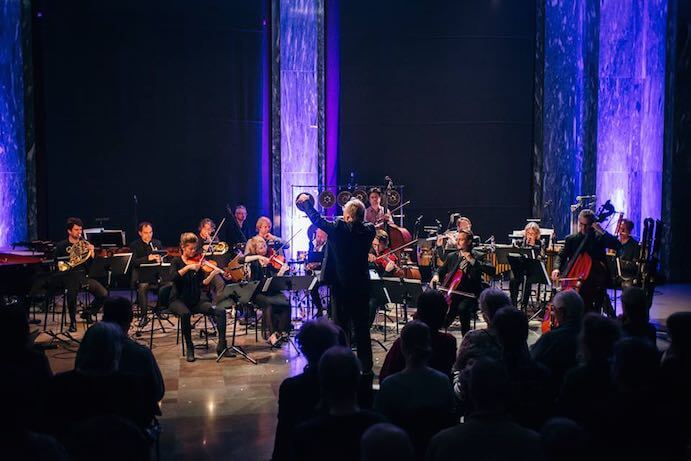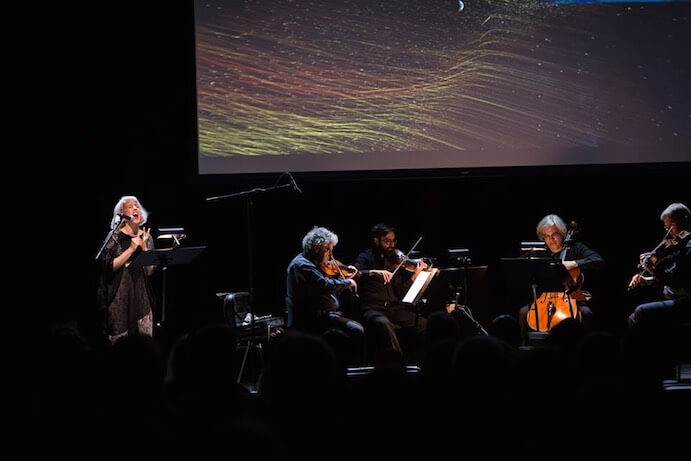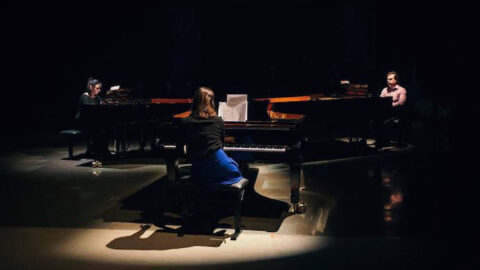A determining factor for any music festival, at least for this reporter, is not what is fun or exciting or even educational, but if there is at least one performance which actually inspires feelings of gratitude for having been present to experience. Once that’s in place, to cop a Nordic phrase, you know you’re in the middle of the butter’s eye. At Oslo’s 2017 Only Connect Festival of Sound, which ran from May 18-20, that eventuality occurred near the end of the second night. A soprano, a pianist, and two composers–none of their names previously known to me, and yet I grew cold at the thought of a world where I never heard them. The performers–Elisabeth Holmertz and Kenneth Karlsson–work together quite frequently in duo and in the ensembles Cikada, Odd Size and Vollen United. The composers–Jon Øivind Ness and Rolf Wallin–shared in the two pieces presented romantic tendencies mixed with contemporary techniques. Both, for example, employed scripted whispering reminiscent of some of Salvatore Sciarrino’s vocal works. (They are, respectively, about 20 and 10 years the Italian master’s junior.)

Taken together, the two works (the first a premiere, the second 30 years old) showed that the contemporary need not be counterintuitive, that tradition can be advanced without ripping at its seams. The pairing was bolstered by the assured interpretations of the performers who altogether inhabited the compositions. Holmertz’s dramatic sprechgesang was especially impressive as she read the score while managing to appear possessed against Karlsson’s strong, sparse accompaniment in Ness’s Meditasjonar over Georges de la Tour nr. XVII. They found a Schubertesque despair with minimalist accompaniment (something I didn’t know could even be wished for). Wallin’s …though what made it has gone was more bombastic, and all the more exciting by the plaintive beauty of the first.
Any grand statements after their performance would likely have been both too much and not enough. Fortunately, the night ended in a wonderfully ludicrous recess–Bergen’s ensemble Bit20 playing a set of pieces by Øyvind Torvund based on the 1960s “exotica” music of the likes of Les Baxter and Martin Denny. On a separate stage and adding to (or interrupting) the ensemble were saxophonist Kjetil Møster and noisemaker Jørgen Træen, whose harsh interjections and analog synth bird calls made the music all the more exotic.
The second day had opened with a couple of medleys by the Oslo Sinfonietta to celebrate the 100th anniversary of the Norwegian Society of Composers. First was a pastiche of fanfares (including the Imperial Death March from Star Wars and what might have been an unresolved opening figure from Rhapsody in Blue) with the musicians spread around the open center of the Sentralen, an old bank building recently repurposed into a fantastic arts center that was home to the festival. That evening, the Sinfonietta presented a mash of a baker’s dozen Norwegian composers arranged by Christian Eggen. Both managed to be cohesive works while using referencing and humor. Håkon Thelin’s bass concerto The Ark followed, with the composer as soloist joined by two of the Sinfonietta’s bassists. The composer’s focus, however, was just as keenly set on the chimes and parade drum and extended brass and woodwind tactics. The locus shifted steadily across the orchestra and instrumental sections came in and out. When a heroic theme rose to pull the ensemble together, however, one might have been forgiven for wishing the scattershot sonics would return.

The festival opened boldly the previous night with the wondrous Arditti Quartet playing works written for them by John Cage, Jennifer Walshe, and Kristine Tjøgersen. The latter’s Mistérios do Corpo followed the Brazilian composer Hermeto Pascoal’s piece of the same name, but while he used his body as a percussion instrument, Tjøgersen had the players lightly beating their instruments. They eventually were joined by a video of Pascoale on his back, playing his rendition of the piece as they floated some bright melody fragments atop. The two stacked together quite nicely. Arditti has, no doubt played Cage’s 4 more than any other ensemble, which poses an interesting dilemma: if the open time frames of the piece were intended to instill a level of flexibility in the performance, does that hold up when an ensemble has played it repeatedly? Even if they have fallen into their own patterns, they still delivered it quite beautifully.
But the highlight of the concert was Walshe’s Everything is Important, conceived in the immediate wake of the Brexit vote. With the composer’s voice and video supplementing the quartet performance, it wasn’t a stream of consciousness so much as a waterfall, a barrage of the now in a plugged-in world. Topics as diverse as chemtrails and dating rituals were covered in her machine gun text and nervous web-surfing video. It seemed an exorcism of all the incoming stimuli – unwanted, mundane, obnoxious, toxic – that come at us every day, by accident or intent. Walshe’s vocals were dramatic and effective, occasionally hitting a strongly sung line. But what was most impressive about the work was that it wasn’t excessive, even though it’s about excess. Walshe reflected – pantomimed, even – the ways in which we willingly enter into insidious environments and even enjoy the incessant if not brainwashing then brain-sponging, at least.

She appeared again on the final day of the festival with Toshimaru Nakamura on no-input mixing board and Martin Taxt on amplified microtonal tuba, playing an improvised score for her film An Gélacht, during which she displayed in performance a wider range of vocal technique, sometimes quite jarring, and on film a talent at layered and nonlinear storytelling. The film is a small part of a fictional history of Irish avant garde music she is devising, which is available online and well worth perusing.
But the climax of the third day was Julius Eastman’s 1979 Evil Nigger for three pianos, played by Heloisa Amaral, Elisa Mednilla, and Frederik Croene. The three musicians entered quickly and started playing the fast trills before the stage lights had even come up. It was an impressive site, three concert grands with the covers removed, set nose-to-nose like a clover leaf. They chased each other in quick, alternating formations, occasionally meeting for a seven-note descending theme, still played so quickly that it started to sound like a massive mandolin. Fifteen minutes in they showed no sign of slowing but began applying their sustain pedals, giving rise to a harmonic cloud through which they continued to push and push some more the repeating and near-repeating sequences. The players were persistent, relentless, in their delivery of thousands of notes in less than half an hour.
Hearing thousands of notes in half an hour, or millions of notes in three quick days, seemed to sum up the Only Connect thrill ride. There was also a fine poetry and violin duet, some meditative freak folk improv, an entirely likeable violin recital based on Norwegian folk tunes, artist talks and book presentations, and a closing set by jazz drummer Paal Nilssen-Love with about three dozen musicians spread across the floor. It was the fifth year of the fest and the final one for founding artistic director Anne Hilde Neset. The hope for future connections is strong.
























